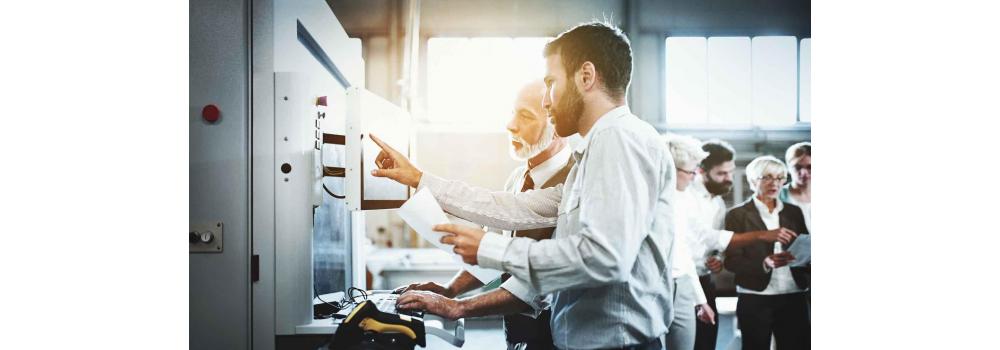According to the National Institute of Building Sciences’ research and recommendations, roughly $145 billion should be dedicated to maintaining, operating and renewing educational facilities every year in order to provide safe, healthy and forward-thinking learning environments for students and school staff. However, as schools strive for academic success, they often face budget restrictions, challenging administrators to find ways to operate more efficiently, resourcefully and proactively.
In particular, one common challenge is cost-effectively managing existing systems to avoid cutting staff and programs. This can be a daunting task for schools, but electrical engineers and other contractors can help administrators stay abreast of technology trends in facility management that support more effective budget use without negatively impacting student or teacher experiences. Heading into contract bidding season, engineers should have a pulse on industry trends to serve as guiding experts for schools.
Here are the top five trends you should know about as you help schools make their facility management decisions for 2020:
(1) Data Driven Decision-Making
Seventy-five percent of organizations using facility management services consider data the key to achieving strategic real estate goals, according to a recent study by real estate investment firm CBRE Group. The firm states that by 2025, data analytics will be critical for addressing costs and performance. The National Center for Education Statistics also recognizes this need, stating that for school facilities specifically, data is important to a variety of stakeholders, from members of the schools’ communities to governments at local, state and federal levels, because it informs critical decisions related to facility planning, acquisition, construction, alteration, maintenance and operations.
By collecting accurate, timely and appropriate facility information, facility managers, along with school operations and administration, can set better benchmarks and leverage year-over-year data to collect actionable insights and identify valuable, cost-effective facility solutions for their schools.
(2) Sustainable Updates and Design
As schools look to incorporate sustainability in their facilities, administrators have to weigh their options in terms of time, value and return on investment. With 20 percent of the U.S. population spending their days inside elementary and secondary schools, according to the Environmental Protection Agency (EPA), it’s critical school facility managers consider the most effective building upgrades and designs to create healthy and safe environments for all students and employees. The more sustainable a school, the more students and staff can enjoy safe and productive learning conditions with optimal working facilities. In addition, the EPA found that sustainable practices in schools are linked to cost-effectiveness, lower absenteeism rates and more available funds.
One of the recent innovations in sustainable schools involves controlling indoor air quality. Indoor air pollution can be a significant issue because of the health threat that air pollutants such as mold and dust mites present. Schools are encouraged to take preventative measures to address indoor air quality by routinely inspecting their HVAC systems, identifying adequate ventilation systems, properly disposing of waste and quickly cleaning spills that could draw pests.
The OneVue Environmental Monitoring Platform directly addresses these issues, and it can streamline the control of temperature and air condition at both individual schools and larger campuses. OneVue Environmental Monitoring can ensure optimal air quality, temperature control and humidity monitoring in every room, from auditoriums and gymnasiums to labs and classrooms.
(3) Integrated Building Networks
More than 20 billion connected things will be in use by 2020—up from 8.3 billion in 2017, according to Gartner. Education facility managers should look to identify solutions that integrate building features, such as clocks, bell schedules and public announcement (PA) and text systems.
To connect facility managers or administrators with students, teachers and staff members, Primex offers integrated education solutions, such as the OneVue System, to provide a holistic solution to clocks, visual communications and school bell schedules. This cohesive approach helps get students to class on time, maximize teaching hours and eliminate timely and costly maintenance to keep every clock at the right time, allowing facility teams time to focus on more valuable projects.
In addition, building networks that allow for visual communications that integrate with text systems are the future of keeping children and staff safe during emergency situations. Implementing an updated, technology-focused program allows schools to quickly and effectively notify students and staff of an incident and give them specific instructions to stay safe.
(4) User-Focused Innovations
Along with cost-effectiveness, operational efficiency and safety, education administrators also have to keep the “users”—faculty and other staff—top of mind when researching and selecting new facility management solutions. Often, a major priority is ensuring these users can focus on delivering supportive and inspiring environments and avoid wasting time troubleshooting technology.
For instance, a bell controller, such as the PrimexEVENT Bell Controller, can integrate with existing PA systems to manage bell schedules and ensure class time accuracy across all rooms in a building, or even throughout an entire district or campus. This allows administrators to spend less time maintaining bell schedules and provides students and teachers the opportunity to fully maximize their time in the classroom.
(5) Resilient and Reliable Facilities
Safety is a top priority for education administrators, and it’s critical that facilities are equipped with reliable systems for quick and effective dissemination of information and alerts. The Primex OneVue Notify InfoBoard offers visual communication and critical alerts—perfect for busy, noisy environments. InfoBoards use a cloud-based software to display messages, date and time information or urgent notifications. They’re configured to operate during power blackouts, daylight saving shifts and IP network failures. This type of resilience is crucial for keeping schools safe for all students, teachers and staff in the face of emergency situations.
As engineers head into the 2020 contract bidding season, they can partner with education facility managers to identify cost-effective, short- and long-term solutions to create safe, healthy and innovative work environments for school staff and students.
For more information about how Primex OneVue’s integrated systems can help schools operate more safely and cost-effectively through innovative technology, visit www.primexinc.com/education.
